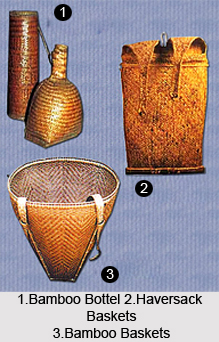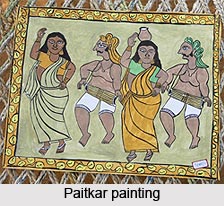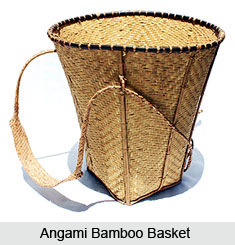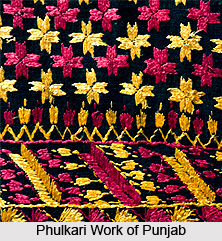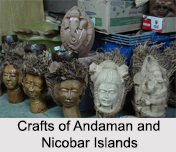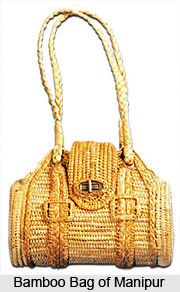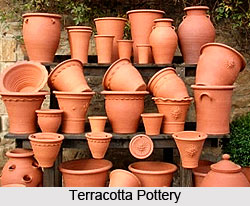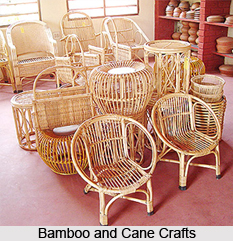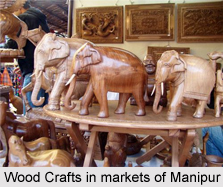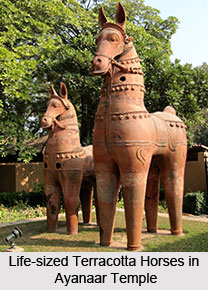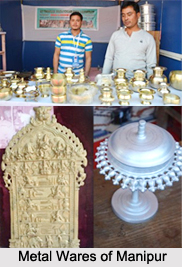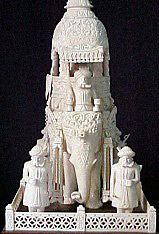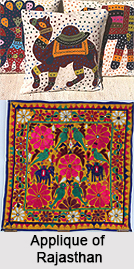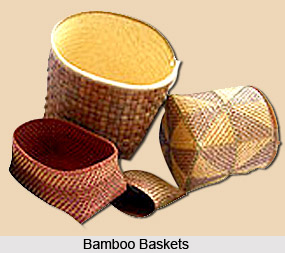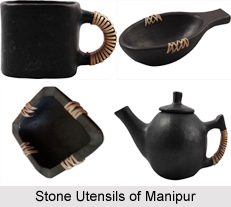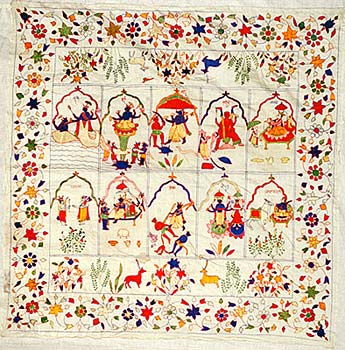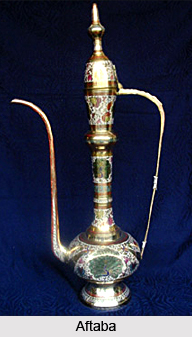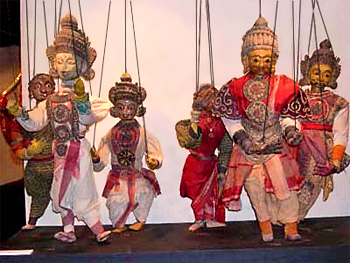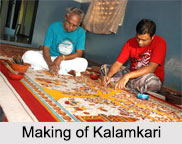 Kalamkari is a block printed or hand painted cotton textile, manufactured and designed in parts of India. The word is taken from Persian words with "kalam" (pen) and "kari" (craftsmanship or skill in art) - meaning "painting with a pen". Sarees having kalamkari prints have been worn by women for ages. This particular type of crafts, which is made by Machilipatnam at Pedana near Krishna district of Andhra Pradesh, has evolved with the benefaction of Golconda Sultanate and Mughals.
Kalamkari is a block printed or hand painted cotton textile, manufactured and designed in parts of India. The word is taken from Persian words with "kalam" (pen) and "kari" (craftsmanship or skill in art) - meaning "painting with a pen". Sarees having kalamkari prints have been worn by women for ages. This particular type of crafts, which is made by Machilipatnam at Pedana near Krishna district of Andhra Pradesh, has evolved with the benefaction of Golconda Sultanate and Mughals.
History of Kalamkari
The paintings then used to portray Hindu Deities and the panoramas from Hindu myths. Machilipatnam being a Muslim region, the weavers were involved in the block printing art while the artists from Kalahasti practiced painting Hindu mythological scenes. This colourful art dated back to more than 3000 B.C. According to the historians, fabric samples portraying Kalamkari art was found at the archaeological sites of Mohenjo-daro. It was throughout the Mughal period when this technique of painting got identification. Mughals promoted this art in the Golconda and Coromandel region where skilful craftsmen used to practice this art and in this way this art and the word Kalamkari developed. Under the Golconda, this art boomed at Machilipatnam in the Krishna district of Andhra Pradesh and further was promoted during the 18th century, as a decorative design on clothing by Britishers in India.
Different Types of Kalamkari
Following are the different types of Kalamkari:
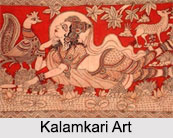
•Karrupur Style: Karrupur is a style of Kalamkari that expanded in the Thanjavur area throughout the Maratha rule. The Kalamkari work was a further decoration to the gold brocade work in the natural fibre fabric, which was used as sarees and dhotis by the magnificent family throughout the era of Raja Sarfoji and later Raja Shivaji.
•Masulipatnam Kalamkari: The Masulipatnam Kalamkari was persuaded by Persian motifs and designs. The outlines and major features are done using hand carved blocks. The finer details are later done by the pen.
•Kalahasti Style: The Kalahasti tradition which expanded in the temple area chiefly deliberated on themes form Hindu mythology, epics and images of Gods and heroes.
Technique of Kalamkari
There are various techniques that can be employed for this type of paintings. The fabric of the cotton gets its shine and glossiness by immersing it for an hour in a mixture of Myrobalan (resin) and cow milk. The reasons and contours are then sketched with a point in bamboo that is soaked in a mixture of water and jagri fermented in water. It is applied one by one. After each colour is applied the Kalamkari is washed away. So each fabric can endure up to 20 washings. Different types of effects are obtained by using seeds, plants, cow dung and crushed flowers. Myrobalan, a non-resin, is used along with milk of buffalo to fix the natural dyes on cotton. The specialty is that the end products are mellow. Bright colours are used but the finish is not flashy. The cloth looks better and better with further washing, with the designs standing out even better against the background.
Making of Kalamkari
Kalamkari art is prepared through 23 ways. From natural procedure of bleaching the material, sun drying, preparing natural dyes, hand painting, to the procedures of air drying and washing, the complete procedure is a process that requires accuracy. First treated with a solution of cow dung and bleach, cotton fabric is used for Kalamkari. After keeping the fabric in this solution for hours, the fabric gets an identical off-white colour. After this, the cotton fabric is engrossed in a blend of buffalo milk and Myrobalans. Later, the fabric is washed under running water to throw out the smell of buffalo milk. The fabric is washed 20 times and dried under the sun. Once the fabric is ready for painting, the artists then sketch motifs and designs on the fabric. After this, the Kalamkari artists arrange dyes using natural sources to fill colours within the drawings.
Colours and Themes of Kalamkari
Kalamkari specially portrays epics such as the Ramayana or Mahabharata. Though, there are recent applications of the kalamkari technique to portray Buddha and Buddhist art forms. Kalamkari art chiefly use earthy colours like indigo, mustard, rust, black and green. Natural dyes used to paint colours in Kalamkari art is extorted for natural sources with no use of chemicals and synthetic matter.
